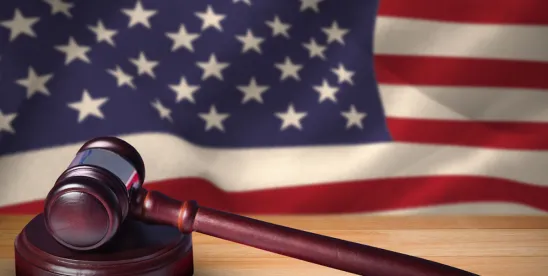The Beltway Buzz is a weekly update summarizing labor and employment news from inside the Beltway and clarifying how what’s happening in Washington, D.C., could impact your business.
Supreme Court Begins 2024/2025 Term. The Supreme Court of the United States kicked off its new term this week. Some of the cases the Buzz will be tracking include the following:
- In E.M.D. Sales Inc. v. Carrera, the Court will attempt to resolve a circuit split over the burden of proof that employers must satisfy to demonstrate the applicability of exemptions from the Fair Labor Standards Act’s minimum-wage and overtime requirements.
- Stanley v. City of Sanford will address whether the Americans with Disabilities Act allows former employees—as opposed to applicants or employees—to sue for discrimination with regard to fringe benefits.
- In Ames v. Ohio Department of Youth Services, the Court will determine whether a plaintiff pursuing a so-called “reverse discrimination” claim (in this case, an employee claiming she was fired because she is heterosexual) must meet a higher standard of demonstrating “background circumstances” in order to prevail.
The Buzz will be watching these cases closely and will be monitoring the Court’s docket as it adds cases for the current term.
NLRB Issues Latest Memo on Noncompetes and Other Contractual Provisions. On October 7, 2024, National Labor Relations Board (NLRB) General Counsel Jennifer Abruzzo issued a memorandum, entitled, “Remedying the Harmful Effects of Non-Compete and ‘Stay-or-Pay’ Provisions that Violate the National Labor Relations Act.” The memo, which expands on General Counsel Abruzzo’s 2023 memo outlining her legal theory as to why noncompete agreements are unlawful, is divided into two main parts.
- The first part of the memo sets forth the general counsel’s theory of how “make-whole relief” should be awarded in the context of unlawful noncompete provisions. In such a situation, the employee must demonstrate that the provision deprived the employee of a better job opportunity; the employer must then “compensate the employee for the difference (in terms of pay or benefits) between what they would have received and what they did receive during the same period.” The same remedial theory applies to former employees who demonstrate that they were out of work longer, took lower paying jobs, or paid for retraining in order to comply with the terms of the noncompete provisions.
- The second part of the memo lays out General Counsel Abruzzo’s theory that so-called “stay or pay” contractual provisions—such as training and educational repayment agreements or sign-on bonuses—unlawfully restrict employee mobility “unless they are narrowly tailored to minimize any interference with Section 7 rights.” The memo maintains that these agreements: (1) chill employees from engaging in protected concerted activity “for fear that termination would trigger the payment obligation”; and (2) “tend to discourage employees from seeking to improve their lot through job mobility by erecting a financial barrier to quitting.” Nevertheless, such provisions may be lawful if they advance a legitimate business interest and are narrowly tailored to minimize any infringement on Section 7 rights.
Although the Board has not ruled on the matter, in June 2024, an NLRB administrative law judge ruled that noncompete and nonsolicitation provisions contained in an employment agreement were unlawful.
Warehouse Protection Bill Reintroduced. Democratic senators have reintroduced the Warehouse Worker Protection Act—this time, with the support of a new Republican cosponsor, Senator Josh Hawley of Missouri. The revised bill grants enforcement authority to the Federal Trade Commission and adds an ineffective and unrealistic small business exemption. Despite the bipartisan support, the bill is unlikely to gain much traction during the remaining weeks of the 118th Congress. However, the employer community should be concerned that a Republican senator supports legislation that would revise the Occupational Safety and Health Administration’s (OSHA) rejected ergonomics standard and create a new unfair labor practice if an employer implements a productivity quota. Accordingly, this bill bears watching if it is reintroduced in 2025.
EEOC Releases 2024 Litigation Stats. This week, the U.S. Equal Employment Opportunity Commission (EEOC) announced statistics related to its litigation and enforcement program for fiscal year (FY) 2024 (October 2023 through September 2024). According to the announcement, the EEOC filed 110 lawsuits in FY 2024, including the following:
- 13 new systemic cases involving a pattern, practice, or policy of discrimination
- 48 cases under the Americans with Disabilities Act (ADA)
- Over 40 cases alleging retaliation under various statutes enforced by the EEOC
- 7 cases under the Age Discrimination in Employment Act (ADEA)
- 5 cases under the Pregnant Workers Fairness Act (PWFA)
- 5 sexual harassment cases on behalf of teenage workers under Title VII of the Civil Rights Act of 1964 (Title VII)
- 4 cases under Title VII alleging sex discrimination based on sexual orientation
- 3 cases under Title VII alleging sex discrimination based on gender identity
The PWFA, which became effective on June 27, 2023, can present new challenges for employees. The EEOC’s announcement notes that “[t]he agency focused on enforcing the PWFA as an emerging issue” and that “the Commission’s lawsuits allege[d] employers failed to provide reasonable accommodations to workers who were entitled to them and often discharged employees as a result.”
Hughes Oughta Know. On October 10, 1910, Charles Evans Hughes was sworn in as an associate justice of the Supreme Court of the United States. A prominent New York attorney and law professor, Hughes’s political career began in 1906 when he defeated William Randolph Hearst to be governor of New York. After completing his second term as governor, Hughes was appointed to the Supreme Court by President William Howard Taft. Hughes served for six years on the Court before resigning to run for president in the 1916 election, which he lost to Woodrow Wilson. Hughes then returned to the private practice of law before he was appointed secretary of state by President Warren G. Harding. In 1930, President Hoover appointed Hughes chief justice of the Supreme Court. As chief justice, Hughes played a significant role in the development of jurisprudence during the New Deal era of the Court. For the Buzz, we remember Hughes for drafting the majority opinion in NLRB v. Jones & Laughlin Steel Corp., which upheld the constitutionality of the National Labor Relations Act or Wagner Act.




 />i
/>i

